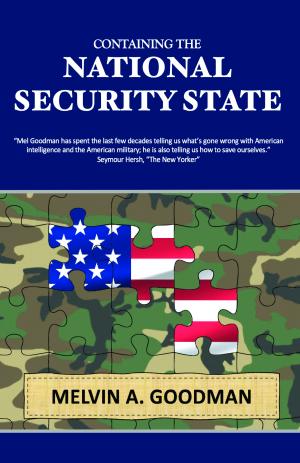Apr 4, 2023
The Washington Post’s One-Sided Assessment of Disinformation

Throughout the Cold War, the United States and the Soviet Union used covert methods of political intervention and conflict, and pursued proxy wars, election interference, and disinformation campaigns to advance their interests. Both powers relied on disinformation as a core tactic throughout the Cold War and the subsequent decades, competing in an arms race of fictions to cultivate ideological support internationally and domestically.
Last week, an unusually long editorial in the Washington Post documented Soviet efforts to use disinformation against the United States without ever mentioning the activities of the United States and the Central Intelligence Agency to blacken the image of the Kremlin. The article is part of a series that the Post calls “Annals of Autocracy.” It quotes the historian Thomas Rid, who wrote that “Disinformation operations, in essence, erode the very foundations of open societies.”
Sadly, the worst example of a U.S. campaign of disinformation was self-inflicted featuring the joint efforts of the White House and CIA to create a case for war against Iraq out of whole cloth. Never forget CIA director George Tenet’s statement that it would be a “slam dunk” to provide intelligence to convince the American people, not the White House, of the necessity for war against Iraq in 2003. The intelligence distortions and lies enabled President Bush and Vice President Cheney to go to the Congress and the American people to make a case for an immoral war. Russian President Vladimir Putin is guilty of “crimes against the peace” in Ukraine. And the United States is guilty of crimes against Iraq, given the hundreds of thousands of Iraqi civilians killed in the campaign of “shock and awe.”
Bush used a phony National Intelligence Estimate (NIE) engineered by a National Intelligence Officer, Robert Walpole, to provide the intelligence community’s “evidence” of Iraqi weapons of mass destruction (WMD), which, in fact, were non-existent. Another NIO, Paul Pillar, submitted an unclassified White Paper to the Congress and the American people that repeated the false allegations of the NIE, omitting the dissents to the estimate from the Department of State’s Bureau of Intelligence and Research. Pillar is currently a senior fellow at Georgetown University.
CIA deputy director John McLaughlin used the estimate and the white paper to craft a speech for Secretary of State Colin Powell that he gave to the United Nations in February 2003, only several weeks before the start of the war. The speech was crafted to convince an international audience of the need to destroy the non-existent WMD. Powell’s speech was a staged farce with Tenet and Director of National Intelligence John Negroponte ordered to sit directly behind the secretary of state.
The White House and the CIA were wrong on every aspect of Iraqi WMD—nuclear, biological, and chemical, and there were no honest errors in the process. Bush cited a forged document in January 2003 to argue that Iraq was seeking enriched uranium from Niger. Tenet used the reports of a discredited German asset code-named “Curveball” to charge that Iraq had deployed mobile biological laboratories to avoid detection. A CIA source who had been rendered to Egypt, where he was tortured, was the sole source for other WMD allegations. The very act of turning over a source in this fashion to a third party intelligence service with the expectation of the use of torture is a violation of Geneva conventions. In other words, a war crime.
Another elaborate exercise in disinformation was the so-called “Papal Plot,” the CIA’s campaign to accuse the Kremlin of responsibility for the attempt on the life of Pope John Paul II in 1981. Between 1981 and 1985, the CIA collected significant intelligence that demonstrated that the Soviets had no role in the plot and even warned their East European allies to keep a distance from non-state terrorist organizations that could be involved. In 1985, however, CIA director William Casey used a discredited clandestine report to prepare a paper on Soviet complicity.
Casey’s deputy director for intelligence, Robert Gates, conducted the exercise in camera, a highly unusual step at CIA. Gates recruited three analysts who were ordered not to discuss the project with the CIA’s experts on terrorism; all three received cash awards and promotions for their efforts. This is just the kind of exercise that breeds cynicism within an organization. The fact that Gates received confirmation from the Senate as CIA director six years later only worsened the problem.
The disinformation campaign for the “Papal Plot” had the support of the leading neoconservatives of the 1980s, including Haig, State Department officials Robert McFarlane and Paul Wolfowitz, and State Department consultant Michael Ledeen. The final document was sent to the highest ranking members of the Reagan administration, including the president himself and the vice president. Fortunately, when George Shultz arrived at the State Department to replace Haig, he put the kibosh on the entire exercise. William Webster did the same thing at the CIA when he arrived as director in the wake of Casey’s death in 1986.
Meanwhile, a stringer for the New York Times, Clair Sterling, used numerous pieces of disinformation that had been placed in European newspapers by the agency’s directorate of operations to publish a book, “The Terror Network,” which Casey touted to the agency’s analysts and clandestine operatives. This was classic blowback of propaganda. Sterling presumably had high level support at the Times because it is rare for a Times’ stringer to get articles placed on the front page.
A bizarre example of the blowback of disinformation involved a president of the United States. In his very first press conference, President Gerald Ford used a question on the Middle East and the Persian Gulf to accuse the Soviet Union of building a military base on the island of Socotra off the Yemeni coast. The island of Socotra had not seen the footprints of Robinson Crusoe’s Friday, let alone a Soviet military base, but the CIA’s directorate of operations had placed this charge in the European press, and it was picked up by the Associated Press. A zealous White House staffer placed the false information in the president’s briefing book, and it found its way to Ford’s press conference.
There are numerous examples of CIA’s disinformation that could be cited. The CIA and Stanford University’s Hoover Institution collaborated for years to provide false and exaggerated information regarding membership of various communist parties in Europe. The so-called “bomber gap” of the 1950s, which President Eisenhower ignored, and the “missile gap” of the 1960s, which President Kennedy exploited, involved the overseas chickens of CIA propaganda coming home to roost in the White House. CIA’s disinformation charged the Soviet Union with being behind the assassination attempt against General Alexander Haig in Brussels, Belgium where he served as the Supreme Allied Commander. This, too, found its way into the U.S. press, and CIA director Casey professed to believe it.
There are also examples of the CIA leaking information to U.S. reporters and then citing their stories to their advantage, such as the exaggerated examples of the effectiveness of its detention and interrogation program in thwarting terrorism in the wake of 9/11. When the editorial writers of the Washington Post were considering examples of U.S. deceit in their twenty-year retrospective on the Iraq War, it would have been a good time to discuss U.S. use of disinformation.
Recent News and Latest Book
Iran and the US Say Enough, Will Israel Go Along?
The emphasis now should be on a cease fire in Gaza; release of the hostages; a surge of humanitarian assistance to Gaza; and talks with Iran that could lead to diplomatic recognition.
Spies and Their Lies: the Trials and Tribulations at Guantanamo
U.S. prosecutors have asked the Court of Military Commissions to reinstate the confessions, and the rest of this year will be taken up with this issue at the U.S. Court of Appeals for the District of Columbia. The new judge, Colonel Matthew Fitzgerald, is the fourth to preside in this case, and he was still in law school when the U.S.S. Cole was attacked and 9/11 took place.


